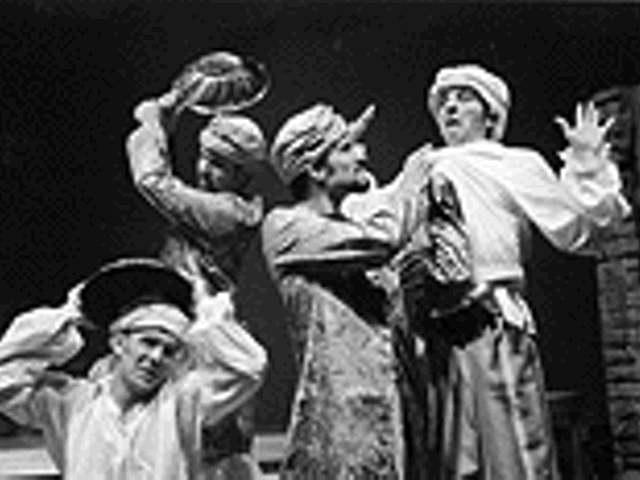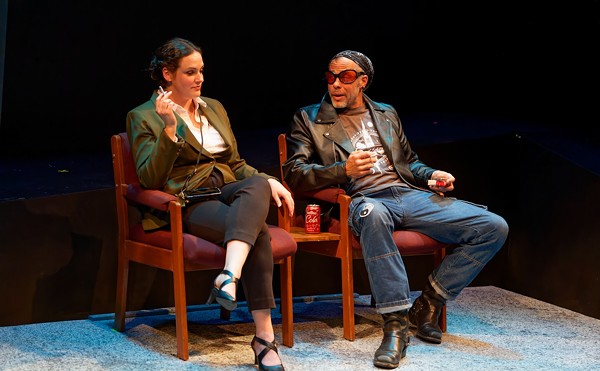Perhaps nowhere else, at no other time, have the dead been treated so well, so elaborately and so much better than they were even in life. Sure, there are the individual odd cases of this kind of treatment of the dead in other cultures: The American sculptor Edward Kienholz, for example, was buried in 1994 in a vintage Packard, with a pack of cards and a 1931 bottle of Chianti to see him into the afterlife. But this is quite different from the Egyptians, who organized an entire culture around the life force and its journey after death into a world where gods and spirits intermingle.
The rare opportunity to learn more about ancient Egyptian culture is afforded by a new exhibition, Egyptian Mummies: Pet-Menekh and Henut-Wedjebu, opening at Washington University's Gallery of Art on Friday, Aug. 27. The exhibition features two excellently preserved mummies, Pet-Menekh and Henut-Wedjebu, which have been part of the university's collection for more than a century. They are being shown together at the university for the first time with this exhibition.
Why would Washington University choose to put these two fabulous pieces on display together now, after so many years? We might be witnessing a return of the fascination for all things Egyptian. The Egyptian fad is a recurring thing, sort of like El Ni ño, a seemingly unexplainable yet recognizable phenomenon that has palpable cultural aftershocks. One of the first manifestations of the Egyptian fad dates to the turn of the century, when hundreds of tombs were excavated, giving the general public a glimpse into the Egyptian netherworld; Bram Stoker, excited by the craze, wrote the Egyptian mystery Jewel of the Seven Stars in 1904. Then, in the 1920s, when more excavations took place in the Valley of Kings near Thebes, the Egyptian style influenced the development of art deco. In the 1970s, when the King Tut exhibition toured the world, Steve Martin sang and danced its praises.
The current fascination with the Egyptian is marked by the recent release of the horror/comedy film The Mummy and the formation of several exhibitions of Egyptian art around the country. Though the show at Washington University consists of only two mummies, what it lacks in size is made up for in quality: Pet-Menekh and Henut-Wedjebu are two of the finest mummies in any collection in this country. Yet they are very different from each other, the products of different periods in Egyptian culture and different stylistic approaches to mummy decoration.
The mummies' provenance is a fascinating tale in itself. Both mummies became property of the university in 1905, when Charles Parsons, an important St. Louis banker and collector, bequeathed his entire art collection to the St. Louis Museum of Fine Arts (which would eventually become the Washington University Gallery of Art). Parsons himself had acquired the mummies from Emil Brugsch, who worked in the 1890s as an agent for the notorious Egyptian Antiquities Service, the company responsible for excavating numerous important tombs and distributing their contents rather indiscriminately to collectors throughout the world.
Henut-Wedjebu is the older of the two mummies on display. She bears the title "Mistress of the House, Songstress of Amun," indicating that she was the singer in the temple of Amun at Karnak during the reign of Amenophis III (1390-1353 B.C.). Although she was not a ruler herself, her importance in the royal court is indicated by the decoration of her coffin, which is covered with strips of gold leaf and elaborate hieroglyphic inscriptions. Her closed coffin contains a beautiful portrait likeness and such unusual details as inlaid eyes and raised breasts and nipples.
An accompanying X-ray photograph shows us that Henut-Wedjebu's skull still contains her brain. She lived at a time when Egyptian embalmers were just beginning to remove the brain as part of the mummification process. Pet-Menekh — a priest of the god Chem — lived later, ca. 300 B.C., and had his brain removed, as the X-ray showing his empty skull attests. For Egyptians, the brain was a far less important organ than the heart, and it soon became common to remove it from the dead body with the use of a hook inserted through the nose.
Pet-Menekh's coffin is quite different from that of Henut-Wedjebu, conforming more to the traditional understanding of Egyptian sarcophagus decoration. The coffin itself is covered in painted hieroglyphs, which extend even to the inside of the coffin lid. The lid is raised to reveal the wrapped mummy, decorated with still more painted hieroglyphs and a haunting funeral mask. This mummy comes with an odd "bonus" — a section of the foot wrappings has deteriorated to allow a view to the bones inside, a detail that earned Pet-Menekh the nickname of "the black-toed mummy" while he was on display at the St. Louis Art Museum from 1927-1978.
Removed from their tombs and displayed in relatively sterile surroundings, the mummies are still awe-inspiring. They carry with them the grave weight of thousands of years of history, yet they still seem very much alive. This was, after all, the idea, as summed up in a hieroglyphic inscription on the top of Henut- Wedjebu's coffin: "O my mother Nut (goddess of the sky), stretch yourself over me, that I may be placed among the imperishable stars which are you, and that I may not die." It's as if all of the preparations, all of the spells and incantations inscribed on their coffins, did indeed ensure them everlasting life.
Egyptian Mummies: Pet Menekh and Henut-Wedjebu opens Friday, Aug. 27, with a reception from 5-7 p.m., and runs through Dec. 12. Concurrent exhibitions at the Washington University Gallery of Art are Coins from St. Louis Collections, featuring a selection of ancient imperial coins; Modern Art on Paper, including works by American and European artists from the university's collection; and Affinity of Form: African and Modern European Art, featuring works from the university's collection and private collections in St. Louis, curated by Thomas Alexander.





